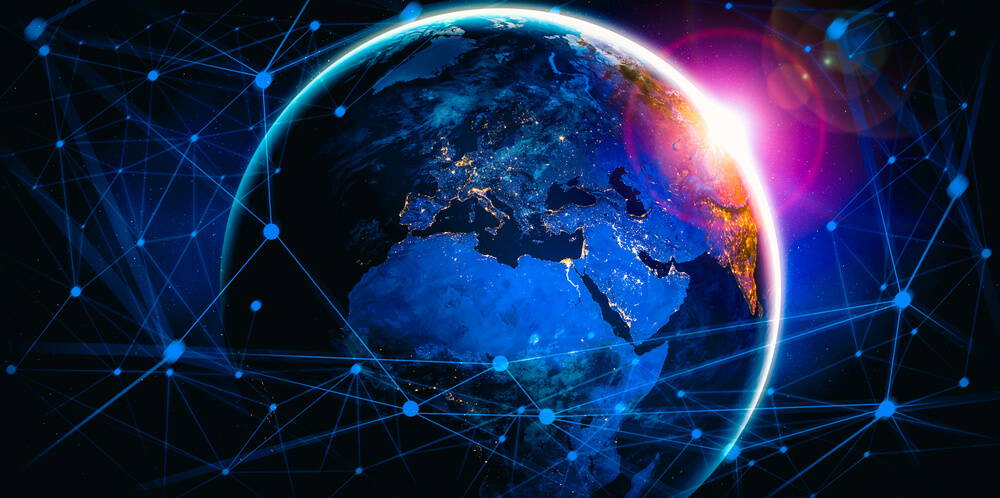5 invaluable insights…
Russian Cruiser Moskva Got a New Commander Months After It Sank – Technology Org
Russian cruiser Moskva was commissioned in 1983. Before it was named after the capital city of the Russian…
Understanding the FinTech Revolution: A Closer Look – Technology Org
As we end 2023, the financial landscape is morphing at lightning speed, propelled by the ground-breaking innovations in…
Revolutionizing Moving: The Impact of GPS Technology – Technology Org
The advent of GPS technology has revolutionized many industries, with the moving sector being no exception. This introductory…
How Can Cloud Hosting Be Cost-Effective for Modern-Age Businesses: Facts and Statistics – Technology Org
More and more people, small and medium-sized businesses, organizations, and infrastructure are moving their data and assets onto…
AI misinformation, world’s biggest short-term threat, says WEF – CyberTalk

EXECUTIVE SUMMARY:
In 2024, 70 nations, comprised of over 3.7 billion people (nearly half of the world’s population) will hold presidential or legislative elections.
The World Economic Forum’s 2024 Global Threats Report, published just ahead of the group’s annual event that takes place this week, highlighted misinformation and disinformation as the #1 threat to global stability across the next two years.
The revelation points to a future where truth is not just contested, but more often than not, deliberately distorted, with severe social implications.
Artificially changing public opinion
Misinformation and disinformation are liable to have profound and explosive impacts on society, especially in a time marked by social polarization, devolving democracies, volatile global political situations, and the rapid proliferation of artificial intelligence.
According to the WEF calculus, artificial intelligence is the primary source of the risks presented by misinformation and disinformation. AI can enable the production of disinformation at a previously unimaginable scale, without any human involvement. In addition, AI and ML tools can be weaponized to create deepfakes, which present untruths in disconcertingly persuasive ways.
Out of all possible short-term threats to the economy worldwide, AI misinformation represents the biggest and most significant short-term threat, WEF has stated.
“No longer requiring a niche skill set, easy-to-use interfaces to large-scale artificial intelligence (AI) models have already enabled an explosion in falsified information and so-called ‘synthetic’ content, from sophisticated voice cloning to counterfeit websites,” the WEF report reads.
Growing distrust of information sources
The WEF report also discusses how false information has resulted in a distrust of information sources, including mainstream media and the government. Authors caution that a societal mistrust of information can lead to a vicious cycle, where societal divisions deepen and civil unrest and confrontations prevail.
“Polarized societies are more likely to trust information (true or false) that confirms their beliefs,” WEF warns, culminating in division and disquiet. On the World Economic Forum’s list of short-term global risks, social polarization is third, just behind extreme weather events.
Other foreboding forewarnings
The WEF report also notes that the misuse of AI technologies within the next decade could lead to new social crises, such as non-consensual deepfake pornography — a growing problem for girls and women — or stock market manipulation.
Preventing misinformation and disinformation chaos
To address this issue, some governments have begun to implement new regulations. In China, a new requirement stipulates that AI-generated content must contain a watermark.
However, as WEF notes, “the speed and effectiveness of regulation is unlikely to match the pace of [misinformation and disinformation] development.” And high levels of regulation can also lead to political repression and domestic disinformation.
The World Economic Forum’s 2024 Global Threats Report ultimately calls for a concerted effort on the part of governments, technology companies and civil society to address the blight that is misinformation and disinformation.
The report advocates for stronger regulatory frameworks, increased funding for detection technologies, and a global commitment to upholding truth and integrity within public discourse.
While the prospect of extreme levels of disinformation and misinformation sounds unsettling, as economist and managing director of the World Economic Forum, Saadia Zahidi, points out, the future is not fixed. People have the potential to alter its course.
What is the World Economic Forum (WEF)?
The World Economic Forum (WEF) is a high-profile non-governmental international organization, founded in 1971. The group’s members include some of the most influential people on the planet; top business executives, government officials, and leaders from international entities.
The WEF is well-known for its annual meetings at the Davos Mountain Resort, in Switzerland, where members and select invited guests hold discussions about global, regional and industry agendas.
For more on this story, click here.
|
Related resources
|
Study: Smart Devices’ Ambient Light Sensors Pose Imaging Privacy Risk – Technology Org
In George Orwell’s novel “1984,” Big Brother watches citizens through two-way, TV-like telescreens to surveil citizens without any…
Lightest Black Hole or Heaviest Neutron Star? Manchester Astronomers Uncover a Mysterious Object in Milky Way – Technology Org
An international astronomer team has found a new and unknown object in the Milky Way that is heavier…
Machine Learning Predicts Response to Drug for Arthritis in Children – Technology Org
Doctors might one day be able to target children and young people with arthritis, most likely to be…
AI Tools For Reliable Software – Technology Org
Software errors harbor dangers and cost a lot of money. To fix them, Stuttgart computer scientist Michael Pradel…
